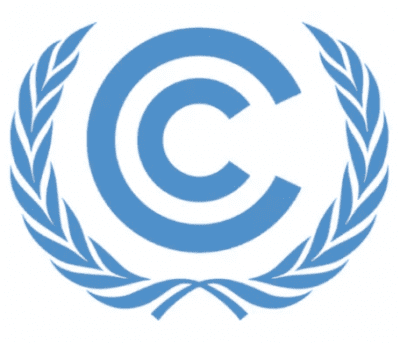 The United Nations COP (Conference of the Parties) conferences are annual gatherings where representatives from countries around the world come together to discuss and coordinate efforts to address climate change. The COP conferences are a crucial part of the United Nations Framework Convention on Climate Change (UNFCCC) process.
The United Nations COP (Conference of the Parties) conferences are annual gatherings where representatives from countries around the world come together to discuss and coordinate efforts to address climate change. The COP conferences are a crucial part of the United Nations Framework Convention on Climate Change (UNFCCC) process.
The 197 nations and territories – called Parties – that have signed on to the 1992 UNFCCC are responsible for monitoring and reviewing the implementation of the UNFCCC with the objective to "stabilize greenhouse gas concentrations in the atmosphere at a level that would prevent dangerous anthropogenic interference with the climate system".
What happens at a COP?
- Negotiations: The primary objective of COP conferences is to negotiate and reach agreements on international climate change policies and actions. Parties negotiate various issues, such as emissions reduction targets, adaptation measures, financial support for developing countries, technology transfer, and capacity-building initiatives. The negotiations are complex and involve multiple working groups and committees.
- Adoption of Decisions: At the end of each COP conference, the parties adopt decisions, which are official outcomes of the negotiations. These decisions can take the form of protocols, agreements, or resolutions. One of the most significant agreements adopted under the UNFCCC is the Paris Agreement, which was reached at COP21 in 2015.
- Reporting and Review: Parties to the UNFCCC are required to submit regular reports on their greenhouse gas emissions, progress toward their climate goals, and efforts to adapt to the impacts of climate change. COP conferences provide a platform for reviewing these reports and assessing the collective progress in tackling climate change.
- Side Events and Exhibitions: COP conferences also feature various side events, exhibitions, and workshops organized by governments, international organizations, NGOs, and other stakeholders. These events provide opportunities for sharing knowledge, showcasing innovative solutions, and fostering partnerships.
- High-Level Segment: The high-level segment of the COP conference brings together heads of state, ministers, and other high-level representatives from governments. During this segment, leaders deliver speeches, outline their countries' commitments, and express their views on global climate action.
- Stakeholder Engagement: COP conferences aim to include the voices of various stakeholders, including non-governmental organizations, businesses, indigenous communities, and youth groups. These stakeholders have opportunities to engage in discussions, present their perspectives, and advocate for their interests.
- Capacity Building and Technical Workshops: COP conferences often include capacity-building activities and technical workshops to enhance the understanding of climate change issues, build skills, and promote knowledge sharing among participants.
The specific agenda and outcomes of each COP conference can vary, but the overarching goal is to strengthen international cooperation and coordination to address the challenges posed by climate change.
Venue Logistics
Each COP event is divided into two physical spaces or zones which house the activities of the conference:
- Blue Zone: The Blue Zone is a UN-managed space where the official negotiation proceedings take place. All delegates within the Blue Zone must be accredited by the UNFCCC. As an accredited observer, UConn receives a varying number of badges for access to the Blue Zone and works to obtain additional badges from . UConn's delegates are allowed to be actively involved in this space, including attending sessions and sharing their expertise, knowledge, and perspectives with participants, including Party delegates. The Blue Zone is also host to panel discussions, side events, exhibits, and cultural events.
- Green Zone: The Green Zone is managed by the host country and is home to dozens of pavilions, presentation spaces, and more. UN accreditation isn’t required to participate in this space and some COPs have a Green Zone that is entirely open to the public, while others require some form of registration.
There are also typically a wide variety of unofficial side events that take place throughout the city where the COP is held.
The Paris Agreement and NDCs
The Paris Agreement is a legally binding international treaty on climate change, signed at COP2
1 in 2015, with the goal of "holding the increase in the global average temperature to well below 2°C above pre-industrial levels and pursuing efforts to limit the temperature increase to 1.5°C above pre-industrial levels, recognizing that this would significantly reduce the risks and impacts of climate change."
Each Party is required to set Nationally Determined Contributions (NDCs) to reduce their greenhouse gas emissions as soon as possible. Emission reduction goals are undertaken on the basis of equity and in the context of sustainable development and efforts to eradicate poverty. Less economically developed Parties are granted an extended timeframe to decrease their emissions due to their smaller legacy contribution to global emissions and essential needs of their citizens.
- Click here to learn more about global progress toward achieving NDCs.
In addition, parties have agreed to prioritize adaptation to climate change impacts, promote climate resilience, and facilitate the development of low greenhouse gas emissions. Moreover, they are committed to aligning monetary flows with carbon reducing technologies and climate-resilient development.
"The United States has set an economy-wide target of reducing its net greenhouse gas emissions by 50-52 percent below 2005 levels by 2030". - The United States of America Nationally Determined Contribution
- Click here to learn more about the US's progress toward achieving its NDCs.